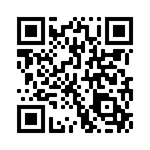
Submissions
Submission Preparation Checklist
All submissions must meet the following requirements.
- The text adheres to the stylistic and bibliographic requirements outlined in the Author Guidelines, which appear in About the Journal.
- The submission file is in OpenOffice, Microsoft Word, RTF or WordPerfect format. Submissions should not be in PDF format.
- The submission has not been previously published or submitted for consideration by any other journal (or an explanation has been provided in the Comments to the Editor).
- Text is single spaced; 12-point font size; typeface Times New Roman; italics are used instead of underlining (except in URLs); and all illustrations, figures, and tables are placed in appropriate places in the text, rather than at the end.
- The manuscript has the specified extension: empirical and theoretical articles (5,000 to 7000 words), and reviews (1,000 words).
- The manuscript contains all the sections specified in the guidelines for authors.
- TWO files are sent: the first one is a document that includes only the authors' information (names, affiliations, emai addresses, ORCID); the second file is the manuscript without references to authors.
- If submitted to a peer-reviewed section of the journal (theoretical and empirical articles), authors should remove any personal references to ensure anonymous review.
- The manuscript adheres strictly to the citation style of the American Psychological Association (APA), seventh edition.
- A third file is included in the shipment with the Letter of Originality and Transfer of Rights in PDF signed in the format provided.
- The article contains AT LEAST FIVE keywords.
- ALL metadata of the manuscript and authors (abstract, keywords, language, ORCID, institution of affiliation, authors' biographical summary) have been captured.
Articles
Contributions submitted to this section could be:
1.1 Empirical studies
They present the results of quantitative, qualitative, mixed-methods, or trans-disciplinary educational research related to the journal’s lines of inquiry. The contributions submitted to this section need:
- A title in Spanish and English; 15 words maximum
- An abstract in Spanish and English; 200 words each. It should come after the article’s title and should present the relevance of the issue under examination, and a brief description of the objectives, methodology, main results and theoretical/pedagogical implications.
- A set of keywords: minimum 3 and maximum 5, in English and Spanish
- An introduction. This section includes the theoretical and empirical background to the study and presents the aim of the research.
- A methodology section
- A data analysis and result section
- A discussion and conclusion section
- A reference list using APA style
The article’s length should be between 5,000 and 7,000 words. All contributions submitted to this section will undergo a blind peer-reviewed process.
1.2 Theoretical studies
They present a theoretically and empirically grounded position regarding an educational theory, phenomenon, trend or issue; they contribute to the conceptualization or reconceptualization of an issue, topic or methodology. The author’s position should build upon pertinent and current educational scientific literature. The contribution should include:
- A title: in Spanish and English; 15 words maximum
- An abstract in Spanish and English; maximum 200 words each. It should come after the title and should contain a brief description of the objectives, as well as the main contributions of the research work.
- A set of keywords: minimum 3 and maximum 5; in English and Spanish.
- An introduction presenting the issue under discussion and the author’s position
- A theoretical and empirical discussion substantiating the author’s position
- A conclusion
- A list of references using APA style
The essay’s length should be between 5,000 and 7,000 words. All contributions submitted to this section will undergo a blind peer-reviewed process.
Download template theoretical articles.
Reviews
The manuscripts submitted to this section present a critical review of an educational book, resource or legal document. We also accept reviews of educational software. Reviews should follow this structure:
- Review’s title (it should not be the same of the analyzed text)
- Information about the book, resource, document using APA style.
- Abstract: summary of the reviewed element. It may include information about the author, his/her work and techniques.
- Evaluation: evaluative judgment of the work reviewed, highlighting contributions and limitations.
- Identification of the reviewer: name, institution, postal address, email and country.
The length of the reviews should be 1,000 words; the journal’s Editorial Board will review these contributions. The work reviewed should be five years old or less.
Download template for reviews.
Privacy Statement
Names and email addresses used to register into this platform will be kept exclusively for the management of the journal. They will not be transmitted to third parties.



























